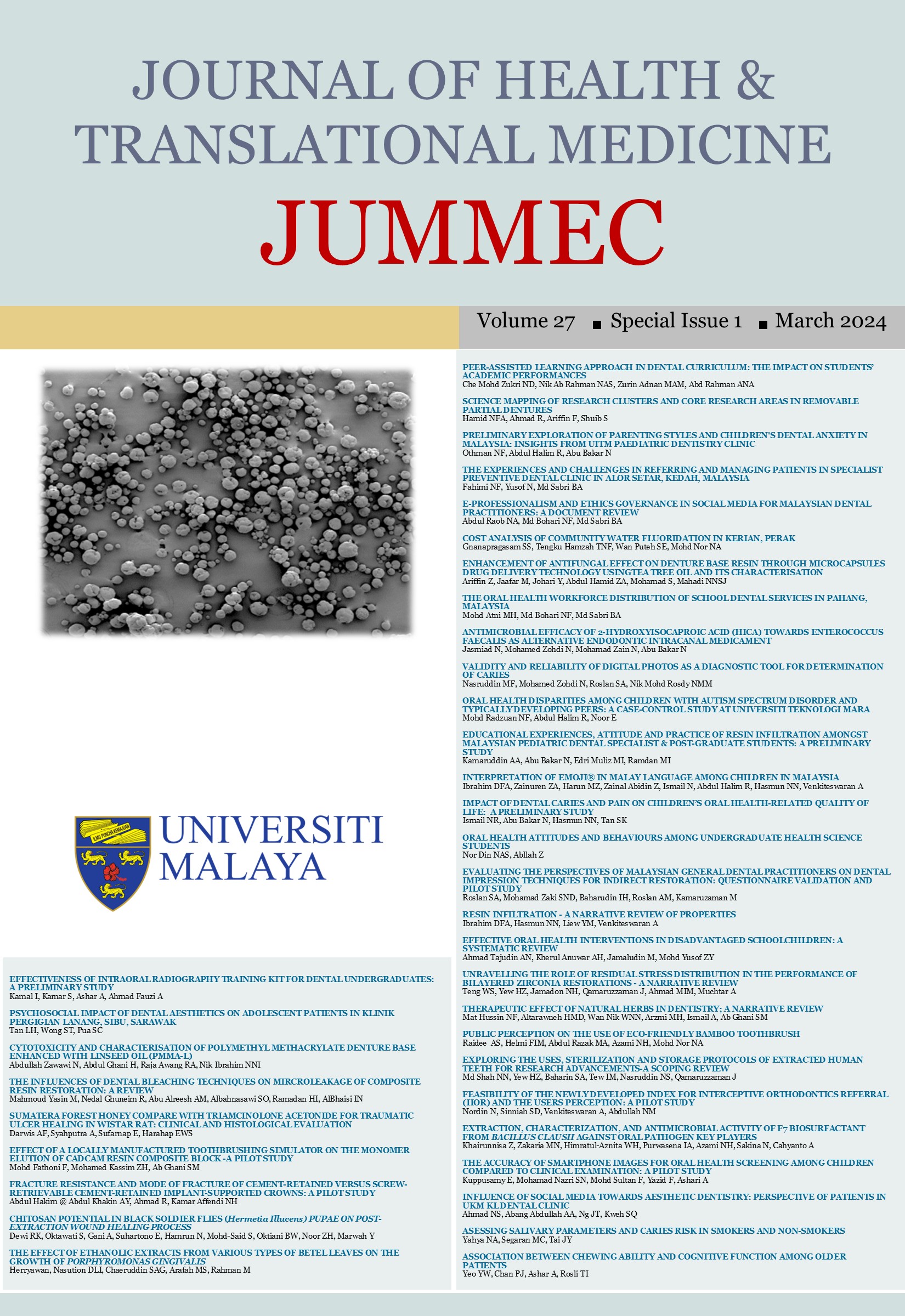THE EFFECT OF ETHANOLIC EXTRACTS FROM VARIOUS TYPES OF BETEL LEAVES ON THE GROWTH OF PORPHYROMONAS GINGIVALIS
Received 2024-03-01; Accepted 2024-03-19; Published 2024-03-26
DOI:
https://doi.org/10.22452/jummec.sp2024no1.37Abstract
People in Southeast Asia have widely used betel leaves for traditional daily medicine. Several types of betel leaves have been empirically proven to treat various dental and oral diseases. Four of them are black betel (Piper betle var. Nigra), green betel (Piper betle L.), earth betel (Peperomia pellucida) and red betel (Piper crocatum). This research aimed to compare the effect of the four types of betel leaf extract inhibiting the growth of Porphyromonas gingivalis (P. gingivalis), the periodontal pathogenic bacteria. The design of this study was a post-test control group design using in vitro disc diffusion method. There were 4 test groups, namely the black betel, green betel, earth betel, and red betel groups, each consisting of a concentration of 25%, 50%, 75%, and 100%. Sterile distilled water was used as the negative control, while the positive control is Metronidazole gel 25%. Sixteen repetitions were performed for each group, and then the average diameter of the inhibition zone formed in each group was calculated using a caliper. The results showed that all groups were effective in inhibiting the growth of P. gingivalis bacteria, with the highest effectiveness obtained from 100% concentration, sequentially 19.65(±0.64) mm for black betel, 19.85(±0.61) mm for green betel, 21.70(±0.53) mm for earth betel, and 25.16(±1.00) mm for red betel. Even so, these results are still below the effectiveness of metronidazole, producing an inhibition zone of 27.50(±0.09) mm. There is a significant difference in the comparison between concentrations for each type of betel leaf (P-value < 0.05). Likewise, comparing each concentration between each kind of betel leaf, the result is also a significant difference (P-value: 0.000). These results prove that betel leaf has efficacy as an antibacterial agent, which might be due to the presents of flavonoids, alkaloids, tannins, and essential oils.
Downloads
Downloads
Published
Issue
Section
License
All authors agree that the article, if editorially accepted for publication, shall be licensed under the Creative Commons Attribution License 4.0 to allow others to freely access, copy and use research provided the author is correctly attributed, unless otherwise stated. All articles are available online without charge or other barriers to access. However, anyone wishing to reproduce large quantities of an article (250+) should inform the publisher. Any opinion expressed in the articles are those of the authors and do not reflect that of the University of Malaya, 50603 Kuala Lumpur, Malaysia.


